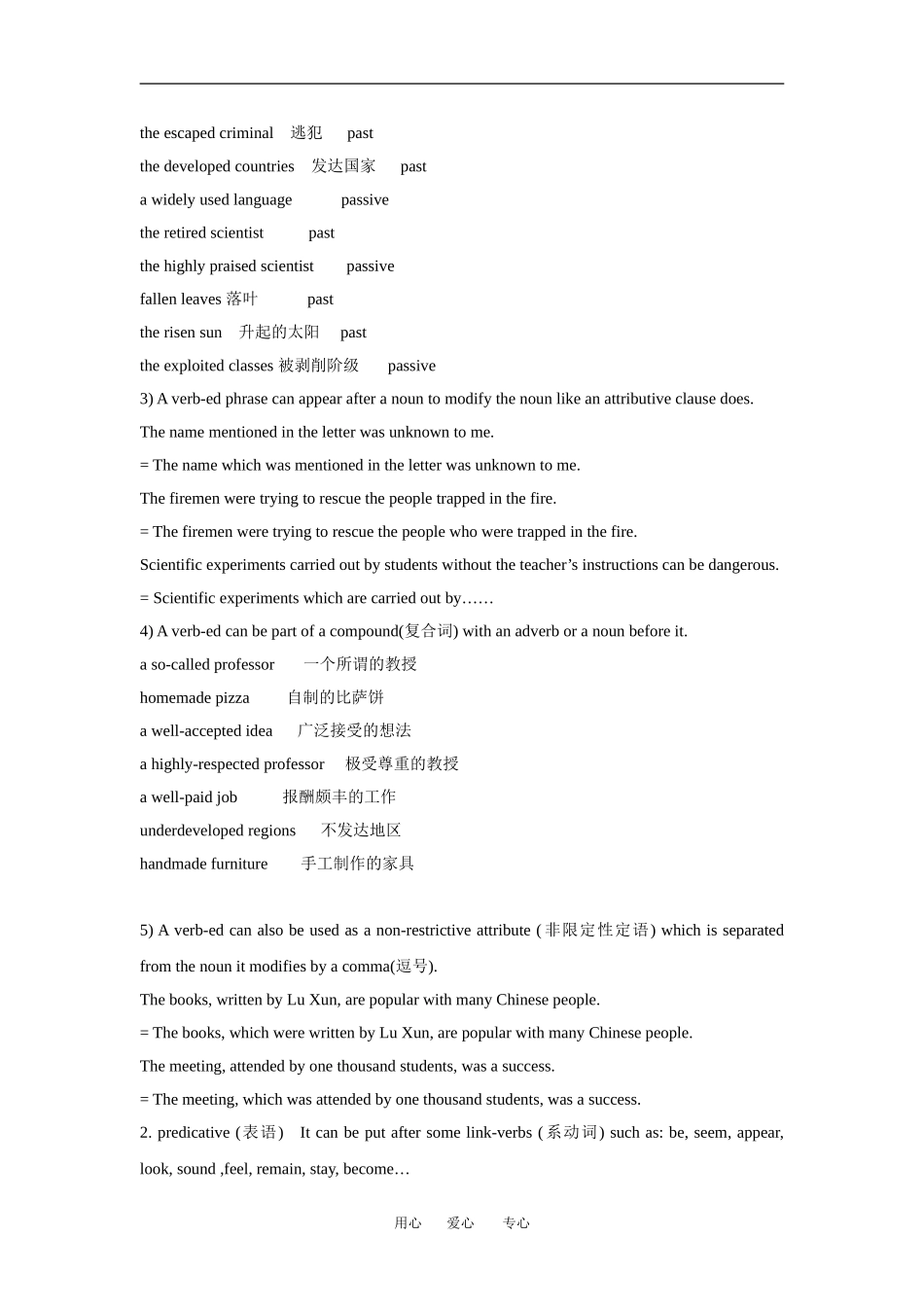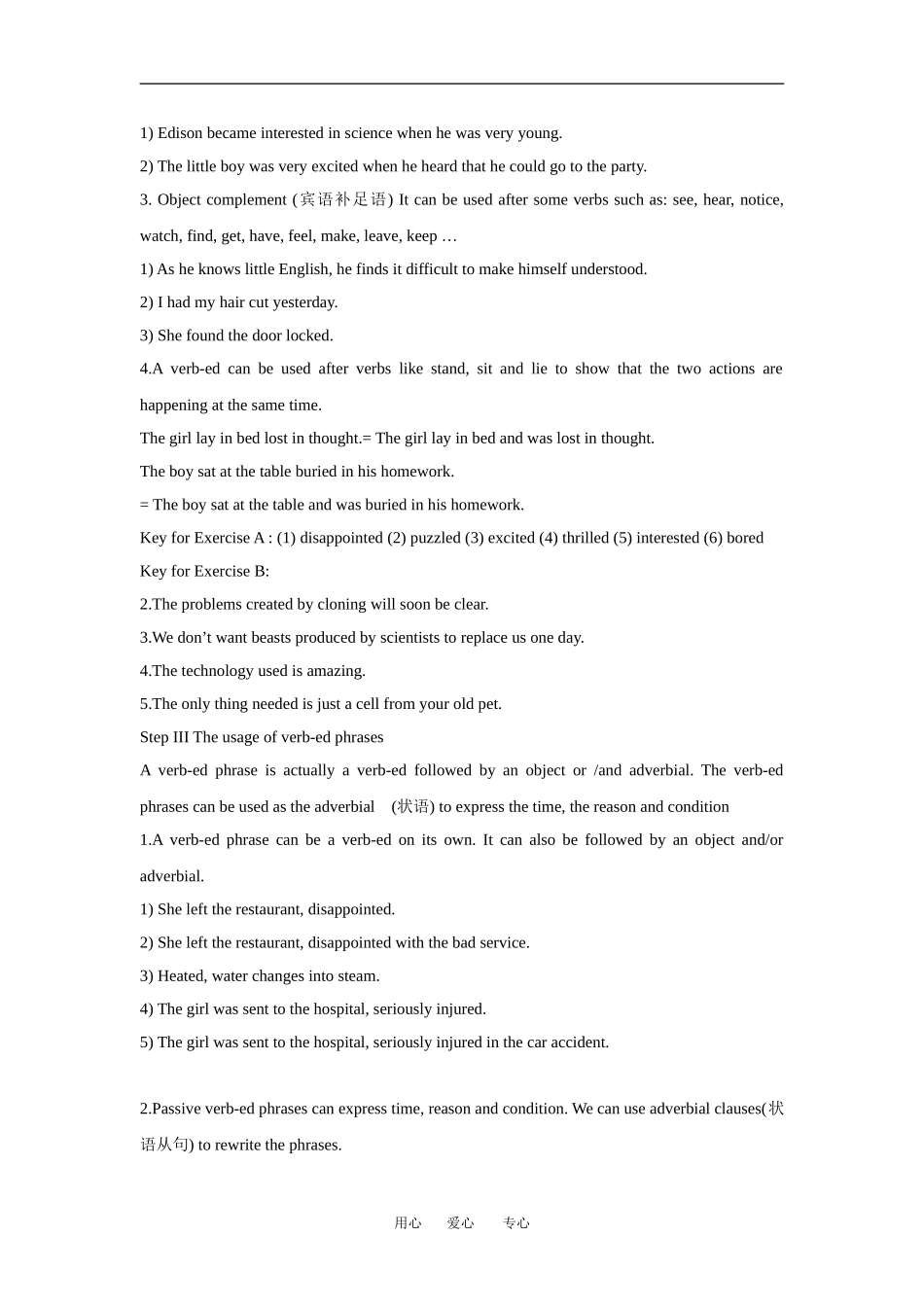Grammar and usageTeaching objects:1.Learn the usage of verb-ed form and verb-ed phrases2.Learn the difference and usage of verb-ing and verb-ed as adjectivesTeaching procedures:Step I IntroductionVerb-ed form can be used like an adjective or an adverb in a sentence serving as( 充 当 ) attribute(定语), predicative(表语) and object complement(宾语补足语)When the verb-ed form is used as an attribute, it can be changed into an attributive clause. The verb-ed form can also be used as an adverb modifying(修饰) some verbs such as stand, sit, lie … etc. to show the two actions happening at the same time.Please identify the parts of speech(词性) of the verb-ed form in different sentences1) The handwritten notes are from jack.2) The kidnappers were using a stolen car. 3) A dark-haired man went into the room.4)The cake was left untouched on the table.5) The girl lay trapped under the wreckage(船舶残骸).Step II the usage of verb-ed formThe functions of verb-ed form1. attribute(定语)1)A single verb-ed can appear before a noun modifying the noun like an adjective. It can be changed into an attributive clause.We should drink boiled water. = We should drink water which has been boiledThey took the injured woman to the nearby hospital at once.= They took the woman who was injured to the nearby hospital at once.2) Generally speaking(一般说来), the verb-ed form of transitive verbs( 及物动词) expresses passive meanings while the verb-ed form of intransitive verbs(不及物动词) expresses active and past meanings. Some verb-eds before nouns can express past meanings, such as escaped, retired and fallen.用心 爱心 专心the escaped criminal 逃犯 pastthe developed countries 发达国家 pasta widely used language passivethe retired scien...


